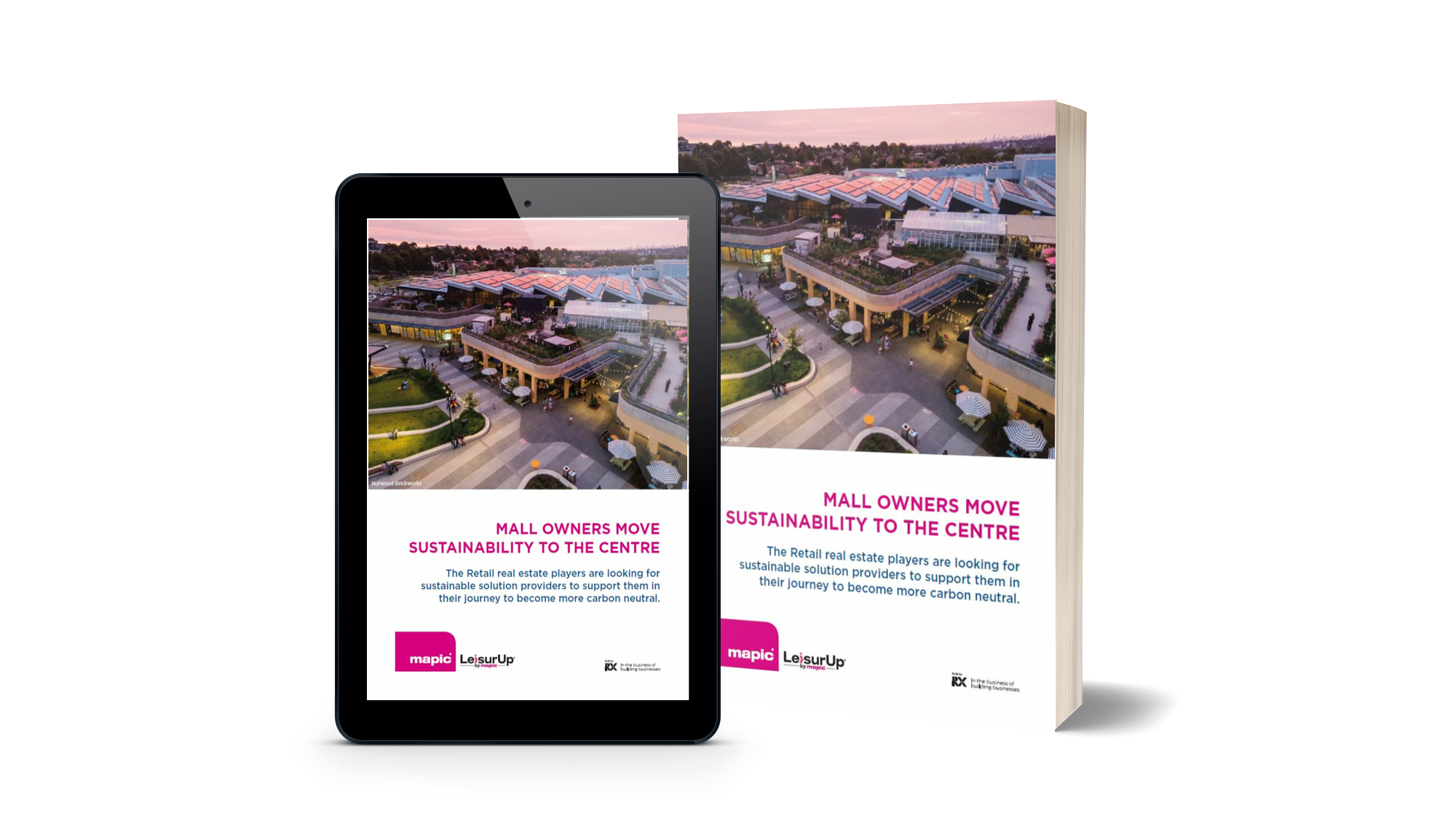In any Marketing 101 class, you learn about the four P’s of marketing: product, price, place, and promotion. These core principles address the who, what, where, and how of selling a good or service. Analysts also typically add a fifth P, people, for businesses in service sectors.

Mall owners move sustainability to the center
In retail, marketing strategists add two more P’s into the mix. These elements, however, vary among business experts. Most include process, which can refer to internal logistics or a customer’s buying process. Others include packaging and physical evidence. For this page, we will address Process and Packaging in addition to the core 5 P’s of retail marketing. A retailer’s physical presence will be addressed under place.
Understanding your 7 P’s is a great first step in developing your retail marketing strategy. You will use these elements to guide you as you form a strategic plan for your marketing needs.

Product
The first P of retail marketing is your product. You need to know the brands and products that you have in stock and distribute that information to your team. Understanding what you’re selling is the key to selling it.
In your product analysis, you should work from your general stock to individual products. On a store-wide level, you should consider whether your merchandise appeals to your target market, using that information to order appropriately. For individual products, you should understand selling points, competitors, and possible objections.
Price
Next, you must consider the prices of your products. Pricing plays an important role in determining your target market. High-priced items are usually considered luxury goods, and they will attract a different customer base than more affordable items. Likewise, low-cost goods, such as those offered by a dollar store, appeal to other markets.
In this phase, you also want to consider whether your price is appropriate for your product and clientele. If your product is priced too high, then you will lose sales. On the other hand, prices that are too low may also deter consumers who perceive the lesser price as lesser quality.
Promotion
The next P in retail marketing is promotion. Promotion refers to how you market and provide information about your product to customers. Evaluating your promotion strategies involves looking at your marketing materials, online presence, and in-store presentation to find ways that you can improve. This process often involves analyzing data from sources like customer surveys, SEO analytics, and company metrics.
Many times, enhancing your promotions involves simple changes to marketing content. For example, phrasing a sale as “50% off” might yield better results than “buy one, get one free.” However, you can also completely overhaul your promotional strategy by reevaluating your retail marketing plan.
Place
Your place is your stores, the digital and physical locations where you sell products. On e-commerce platforms, you need to create a user-friendly interface that shoppers of all ages can use. Your website should also look professional and polished, and you should use professional, SEO-optimized wording.
For your physical locations, you will consider the design and location of each store. All stores should be clean and visually appealing, a minimum. You should also employ retail merchandising strategies, like placing clearance items in back, in your store layout. Your geographic location will determine your demographics and foot traffic. You can use this data to determine prices, design effective ads, and target your sales strategy.

People
The fifth P, people, is applicable to service-based businesses like retail. The people on your front lines can determine your success or failure in a customer service-based industry. From cashiers to management, you will need to make sure that you hire the right people for the right positions. Understanding your hiring and onboarding processes, your company culture, and the needs of your specific employees will help you form a retail strategy that includes your people.
This element also refers to the people outside of your business who you rely on for maintenance, creative, and other services. Your electrician, for instance, should represent your brand well when they are performing work in your store. Your company should partner with reliable vendors who share the same interests as your organization.
Process
In retail marketing, your process is how you move a product from manufacturing into a customer’s hands. Understanding your business’s overall process is a key part of developing a strategy that you can realistically implement. Typically, to narrow the scope of this element, strategists will divide this process into two parts – back-end and front-end.
Your back-end logistics refer to your supply chain. Understanding your company’s supply chain management will help you anticipate future challenges and address current problems. However, many individual retailers rely on corporate logistics structures, so you may not be able to affect change in your back-end processes.
On the front end, your associates will move a product to the floor and sell it to potential customers. This involves internal inventory systems, display setting, store organization, and selling strategies. In your store, you should clearly write out these processes to find inefficiencies and gain a better understanding of your operation.

Mall owners move sustainability to the center
Packaging
The final P in your marketing strategy is packaging. You can likely remember a time when you bought something simply because it looked good. When making a purchase, a consumer is more likely to buy an item with better packaging if the cost is similar. Your customers care about how a product looks on the outside, so as a retailer, you should, too.
Packaging also extends to your business’s physical appearance, or curb appeal. To attract customers, your store should be well-lit, neat, and cleaned thoroughly, and you should get people’s attention with eye-catching displays. Your employees should also be well-groomed, and you should provide uniforms or branded clothing for them to wear. In your stores, you should create a visually appealing environment that invites your customers to enter.
For more information, please refer to the following pages:
- What would be the best marketing plan for a clothing store?
- What Would Be the Best Marketing Plan for a Luxury Store?
- What Would Be the Best Marketing Plan in Food Sector?
- What Would Be the Best Marketing Plan for a Restaurant?
- Retail Marketing Strategy: 15 Ways to Boost Your Sales
- Why Is a Marketing Strategy Important in Retail?
- What Is the Best Marketing Strategy for a Retail Product?
- Retail Marketing Strategy Examples
- Why Google Ads Is Important in Retail Business
- Why a Blog Is Still a Nice Marketing Strategy in Retail
- How to Run a Successful Email Marketing Campaign in Retail
- Is Customer-Centric Marketing the Best for Online Retailers?
- How Can a Local Retailer Use Social Media Marketing?
